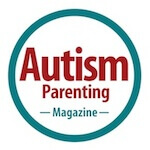As an autism parent, you’ve probably heard of Applied Behavior Analysis (ABA). It’s the most commonly used therapy for children on the spectrum. If you’re confused about this approach – don’t worry, you’re not alone. Many autism parents wonder what the basic ABA principles are.
Applied behavior analysis has seven dimensions supported by scientific-based research for children with autism. These seven dimensions of ABA encourage behavior changes and improve daily living. Let’s explore each of these and see how they can help your child on the spectrum.
If you’d like to learn more about this common approach, you can download your free guide here:
Download your FREE guide on
ABA Therapy for Autism
1. Generality
When a child receives ABA therapy in a clinical setting, this does not always carry over to be continued at home.
This is why behavior technicians, who follow the plans created by the BCBA therapist, need to work with the child in different settings to ensure they fully grasp the targeted skills.
A BCBA therapist, or Board Certified Behavior Analyst, is a trained professional specializing in behavior analysis. They work to assess, analyze, and provide interventions for individuals to address behavioral issues and promote positive behavior changes.
2. Effective
The BCBA therapist will regularly study the data taken by the behavior technicians to make sure the targets and goals are being run effectively.
Adjustments and changes will be made as often as needed to ensure the ABA therapy is effective and that the child is progressing.
3. Technological
ABA intervention programs written by the BCBA therapist must be run the same way by each technician or person to modify behavior effectively.
Technological means having detailed treatment plans that can be easily followed by anyone, including parents, to maintain behavior modifications at home.
4. Applied
This refers to teaching skills that can be carried over in real-life situations. Learning functional play skills in a clinic is very structured.
Applying those skills on a playground with other children supports this dimension of applied behavior analysis.
5. Conceptually Systematic
Conceptually systematic refers to the ABA treatment being scientifically based and applied to improve understanding and behavior in any person receiving ABA therapy.
6. Analytic
ABA technicians must ensure accurate data collection during programs. That way, the BCBA therapist can analyze it and apply ABA principles to bring about change.
7. Behavior
Behaviors need to be observed and measurable for each person. Scientifically backed ABA-applied behavior analysis can then be applied to improve behaviors at home and to improve socially.
Using The Core ABA Principles to Target Behavior
Using the core principles of ABA involves breaking down behaviors and applying techniques like reinforcement to target and improve behavior. This approach is widely used in education, therapy, and behavioral intervention for its effectiveness.
The principles of ABA applied behavior analysis target the four functions of behavior:
- escape or avoidance,
- attention seeking,
- access to tangibles or reinforcements, and
- instant gratification (or “because it feels good”).
The four principles of behavior analysis include:
- Behaviors are affected by their environment:
For example, if a child is bullied at school, they may engage in harmful behaviors to escape or avoid going to school.
- Behaviors can be strengthened or weakened by their consequences:
For example, a child may throw a tantrum at the store for a candy bar, having learned that such behavior often leads the parent to give in, providing access to the desired item.
- Behavior changes are more effective with positive instead of negative effects:
In ABA, a child’s good behavior at school is reinforced with recess, while undesirable behavior results in missing recess.
- Behaviors need to be reinforced or disciplined for socially significant changes:
For example, if a child throws a tantrum over a candy bar at the store and the parent denies it, the child may cry louder and act out more aggressively. If the parent remains firm, the child eventually learns that negative behaviors won’t result in receiving the desired item.
All behavior functions can help an ABA therapist and behavior analyst create an effective intervention plan for autistic children.
ABA Therapy for Behavior Modification
ABA applied behavior analysis can be used to understand behavior better and learn science-backed strategies to change or modify behaviors.
Individuals can learn more about ABA therapy through their doctors or professionals in the autism community. The basic principles of ABA therapy are designed to help alter challenging behaviors over time into more functional and “appropriate” behaviors.
FAQs
Q: What is the basic concept of ABA?
A: Applied Behavior Analysis (ABA) focuses on enhancing behavior using principles from the science of behavior. The term “applied” indicates making socially significant changes.
Q: How do you use ABA therapy at home?
A: To use ABA therapy at home, choose specific behaviors to work on, set clear goals, and use consistent rewards and positive methods to encourage good behavior and discourage challenging ones during daily activities.
Q: What are the types of ABA therapy?
A: There are different types of ABA, such as DTT, which involves one-on-one sessions; ESDM, which combines free play and structure; VBI, for language skills; and NET, which adapts to the child’s daily routine. Each type has specific benefits in promoting development.
Q: At what age is ABA the most effective?
A: Starting ABA therapy as early as possible is crucial for the best results. Studies show that beginning ABA before age four can significantly enhance children’s development, improving social and communication skills and making it easier for them to interact with other children.
References:
Understanding the principles of ABA and how they’re applied
https://www.umassglobal.edu/news-and-events/blog/principles-of-aba
The Big Four: Functional Assessment Research Informs Preventative Behavior Analysis, 2018
https://www.ncbi.nlm.nih.gov/pmc/articles/PMC6411551/
